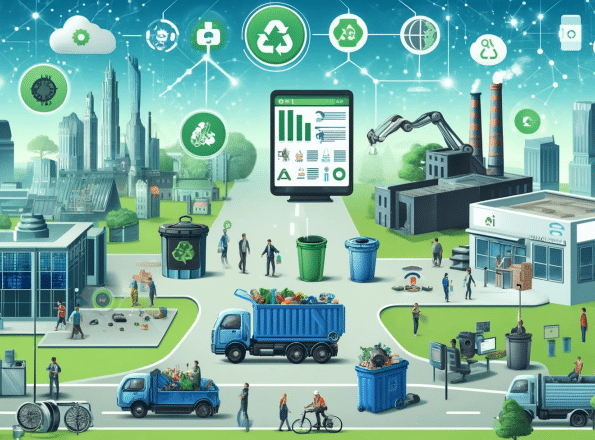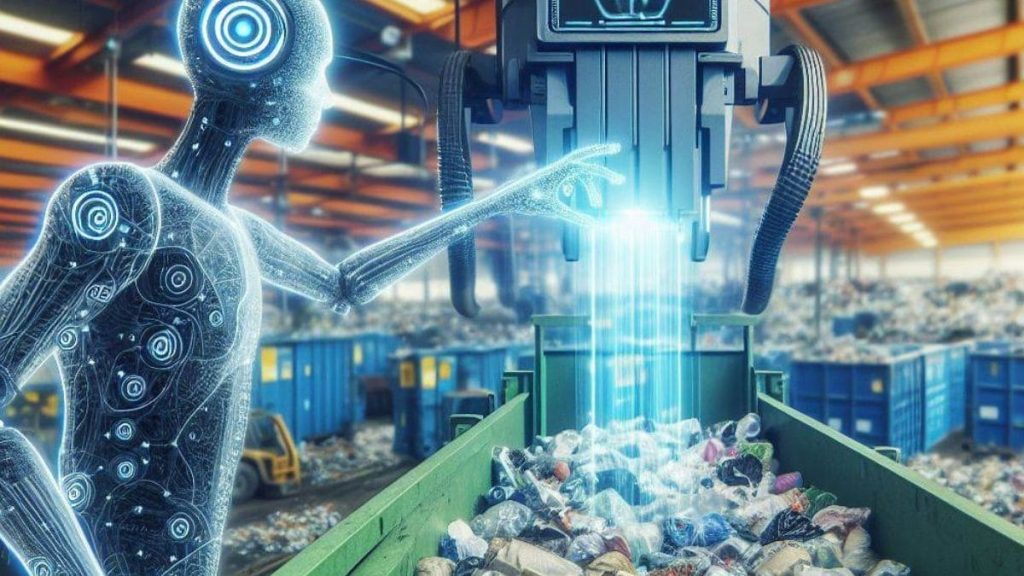Waste & material traceability solution for sustainable facilities

The waste management industry stands at the threshold of a technological revolution. As global waste generation continues to rise and recycling targets become more ambitious, traditional sorting methods are reaching their limits. Enter artificial intelligence—a game-changing technology that’s reshaping how we approach waste sorting and recycling efficiency. AI-powered waste sorting systems are not just improving accuracy and speed; they are fundamentally changing what’s possible in material recovery and circular economy implementation.
Manual waste sorting has long been the backbone of recycling operations, but it faces significant limitations that impact both efficiency and worker safety. Human sorters can process approximately 40–60 items per minute with accuracy rates of 60–80%, depending on material complexity and working conditions. This performance often varies throughout shifts due to fatigue, while the work environment exposes employees to hazardous materials and repetitive strain injuries.
Contamination remains another persistent problem. When non-recyclable materials mix with recyclables, entire batches can become unusable, leading to increased costs and reduced recovery rates. The economic impact is substantial—contamination can reduce the value of recovered materials by up to 50%, making recycling operations less viable.
The complexity of modern packaging compounds these challenges. With new materials, multi-layer packaging, and constantly evolving product designs, even experienced sorters struggle to make accurate decisions quickly. This complexity will only increase as manufacturers innovate with packaging solutions.
AI-powered waste sorting systems combine computer vision, machine learning, and advanced sensors to create intelligent sorting processes that surpass human capabilities in both speed and accuracy. High-resolution cameras and spectral sensors capture detailed information about waste items as they move along conveyor belts.
The computer vision component analyzes characteristics such as shape, size, color, and texture. Machine learning algorithms, trained on millions of images, identify materials with precision that exceeds human capability, distinguishing between plastics, metals, and contaminated items. In facilities where robotic or automated sorters are deployed, this classification data can be used to separate items into correct waste streams.
Crucially, these AI systems continue to improve as they process more data. They adapt to new materials and packaging types, which means sorting accuracy increases over time without additional programming or manual intervention.

The implementation of AI-powered waste sorting delivers measurable benefits across recycling operations:
The evolution of AI-powered sorting continues to accelerate. Beyond today’s performance gains, the next wave of innovation will focus on predictive analytics that help facilities plan capacity, anticipate shifts in waste composition, and schedule equipment maintenance.
Integration with broader smart-city infrastructure will also play a role. Linking AI sorting plants with smart bins, connected collection vehicles, and digital waste transfer documentation creates a closed loop where data flows seamlessly across the entire chain.
As costs decrease, more compact and affordable AI solutions will become available, making this technology accessible to smaller facilities and municipalities and accelerating global adoption.
While Evreka does not manufacture robotic sorters or spectroscopic sensors, our role is to maximize the value of these technologies. We provide the data infrastructure and operational intelligence layer that connects AI-powered sorting systems with the rest of a waste management ecosystem.
Evreka360 uses AI-driven algorithms to monitor fill levels, optimize collection routes, and anticipate maintenance needs, reducing operational costs while improving reliability. WasteDashboard integrates data from sorting facilities, enabling real-time monitoring of throughput, recovery quality, and contamination rates.
For regulated industries, Evreka also ensures compliance. WasteForm digitizes transfer documentation such as the Dutch Begeleidinsbrief, producing audit-ready, inspection-proof reports that align with LMA, EPR, and CSRD requirements.
By connecting operational data from collection, sorting, and reporting into one platform, Evreka helps organizations link AI sorting capabilities with sustainability KPIs, circular economy metrics, and compliance frameworks.
AI-powered waste sorting represents just one part of the intelligent waste management ecosystem. The real opportunity lies in integration: combining advanced sorting equipment with platforms like Evreka that deliver end-to-end visibility, optimization, and compliance.
Whether you are exploring new AI sorting technologies or looking to optimize your existing operations, Evreka provides the foundation to maximize recovery, reduce costs, and meet your sustainability goals.
Request a demo to see how Evreka’s smart recycling solutions can improve your sustainability program and drive measurable circular economy results. Learn more about our comprehensive smart waste management solutions and explore additional success stories from our circular economy partnerships